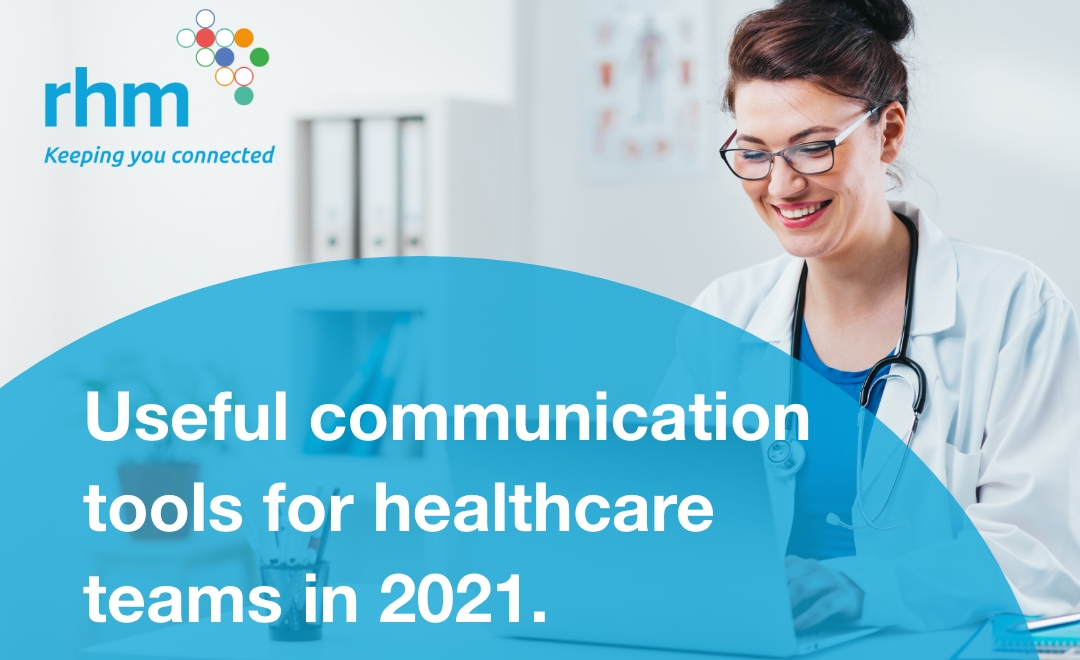
At RHM we’ve been providing high quality communications technology to the healthcare sector for years. We’ve worked alongside smaller surgeries as well as NHS Trusts, Children’s Services and even larger teams within the industry.
During this time, we’ve recognised the need that nearly every team in this sector needs to be able to manage increasingly high volumes of patient calls. This is in line with other goals. Such as speeding up communication between remote staff and those on site. As well as making communication more efficient around the practice. No matter what part of the healthcare industry your team works within it’s likely that these goals are relevant to you.
Thankfully, many technology providers are also recognising these needs. There has been a huge advancement in recent years. Providers are making high-quality communications and connectivity more accessible for businesses of any scale. We know that finding the right technology can be challenging, that’s why we’ve created this blog to introduce you to the services that can be relevant to the healthcare sector in 2021.
During lockdown over-the-phone consultations became the norm for the healthcare industry. While this does have it’s benefits, it often doesn’t feel like a great alternative to a traditional face-to-face appointment. Video conferencing is the solution here, bridging the gap between remote and traditional appointments. The one downside of video appointments is their accessibility, without technical help or specific hardware, many patients struggle to get online and access their appointments. This is where WebRTC can help.
WebRTC is a new service designed to make video conferencing more accessible. Instead of having to download specialist software, creating new user accounts, or purchasing new hardware, WebRTC simply runs within your existing internet browser. As long as your staff have access to a WebRTC-enabled communication service like the new iPECS ONE platform, they can invite patients to calls in seconds.
These invitations will arrive as an email or message, that once clicked on will open the consultation in the patient’s internet browser. It doesn’t matter which device they use, WebRTC runs just as smoothly on a laptop, smartphone or tablet. This means that no matter the device or technical ability anyone is working with, they can access high-quality medical care and a face-to-face connection.
You might already know about 5G. It is the current expansion being made to the UK’s mobile network, but do you know about it’s WiFi equivalent? WiFi6 is being rolled out at the same time as 5G. It arguably has even more benefits, especially to teams in industries like healthcare.
The existing WiFi5 network was launched in 2014. While it has served us well its new generation is looking like a must-have for businesses. Standard WiFi is surprisingly battery intensive for many devices. Especially the portable ones that are most frequently used in a high-demand environment like healthcare. WiFi6 corrects this issue by making sure that devices don’t stay connected when they don’t need to be, saving your battery life.
Any new WiFi network is expected to produce higher connection speeds and WiFi6 does this with ease. It nearly triples the speed of the current WiFi5 network and uses less power while doing so. This adds an extra layer of reliability for healthcare teams working anywhere on their premise. If your connection is powered by WiFi6 you know that you’ll be able to reach your colleagues, anywhere on site, on any device.
Managing the daily influx of calls is one of the greatest challenges faced by teams in the healthcare sector. Especially with the backlog caused by the pandemic, there needs to be a way to manage patients effectively. Technology providers are realising this and advanced call management tools are here to help.
Being stuck in a queue to reach medical staff generally isn’t a pleasant process. With the right services, you can keep customers informed while they wait. New call queuing software allows you to set a limit on how many can wait in the queue at any time, turning away those who join past capacity. It also informs those waiting of their position in the queue, so they can decide whether to wait it out. You can also play pre-recorded FAQs that may answer some queries before callers even reach your team.
If any calls are missed, they are logged according to your patient database, so you know who to call later. Similarly, the most important stats are sent to management teams on a regular basis in an easy-to-read format. This allows them to assign resources better in future. If you notice one reception team is receiving an overwhelming number of calls on a Monday morning, that should be the focus of resources moving forward.
All of the services mentioned in this blog are now available here at RHM. To find out more, get in touch with our team at 0800 041 041.
© rhm telecommunications 2024